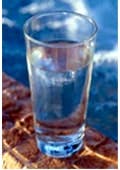Two new studies, commissioned by the American Water Works Association (AWWA) and the Association of Metropolitan Water Agencies (AMWA), examined the cost to remove methyl tertiary butyl ether (MTBE) contamination from public drinking water systems across the United States. These studies update estimates from 2001 that then cited MTBE cleanup costs at approximately $29 billion. The new studies indicate that the clean up costs are likely to be in the range of $25 to $33.2 billion and could be as high as $85 billion or more.
These studies demonstrate that MTBE is a very serious problem and the cost of removing this contaminant from drinking water is substantial. The studies acknowledge that thousands of water systems are already contaminated by MTBE at levels that consumers can taste or smell the chemical in their water. MTBE, which was added to gasoline as an octane enhancer and to help protect air quality, has a strong odor and is listed by EPA as a possible carcinogen.
The AWWA and AMWA reports focus exclusively on the cost to treat contaminated public water supply wells. Other studies have focused on cleaning up leaking underground storage tank (LUST) sites. Removing leaking tanks and cleaning up around LUST sites only removes one potential source of continuing contamination and does not address contamination of municipal water supplies that has already occurred. "Cleaning up leaking underground tanks is important, but it does nothing to remove MTBE from public water supplies," said Tom Curtis, deputy executive director of AWWA. "Leaking underground tank remediation and water supply cleanup require different solutions, so the LUST program will do little or nothing to cleanup public drinking water wells," added Diane VanDe Hei, executive director of AMWA.
The AWWA report is an assessment of the 2001 cleanup cost estimate to address MTBE-contaminated water supplies for Public Water Systems (PWS) prepared by Komex H2O Science, Inc. The AWWA review reveals that Komex likely underestimated the range of costs for removing MTBE from public water system wells. "There are significantly more public water system wells than Komex estimated, and the cost to treat an MTBE-contaminated well is likely to be higher than Komex assumed," Curtis said.
The AWWA assessment suggests that the cost of MTBE contamination of PWS wells is likely on the order of $25 billion, but possibly as high as $85 billion.
If the odor threshold at which MTBE is unacceptable to consumers is less than the 5 ppb assumed in the Komex study, then the number of PWS wells impacted will increase significantly. Scientific investigation supports an odor threshold of 2 ppb or lower. At 2 ppb, the AWWA reasonable best estimate increases to $50 billion or more and at 1 ppb the cost could be as high as $85 billion. "The bottom line for public water systems is many billions of dollars in MTBE cleanup costs," Curtis said.
The AMWA report is based on publicly available data for 36 states that reported MTBE contamination in drinking water supplies. The report estimates cleanup costs for water systems in these states to be $33.2 billion.
"This study was conducted based on empirical data to leave no doubt about the cost to remove MTBE from public water supplies," said VanDe Hei. "If more states tested for and reported MTBE contamination, our study would have shown billions more in cleanup costs."
The AMWA study was calculated by taking into account the number of systems reported to be contaminated, the number of wells associated with these systems and the cost per gallon for filtration of MTBE (based on system size). Analysis also weighed the duration of treatment and the fact that the odor and taste of MTBE can be detected at below 1 part per billion, a level determined by Houston-based Lyondell Chemical Company, an MTBE producer.
Source: AWWA


